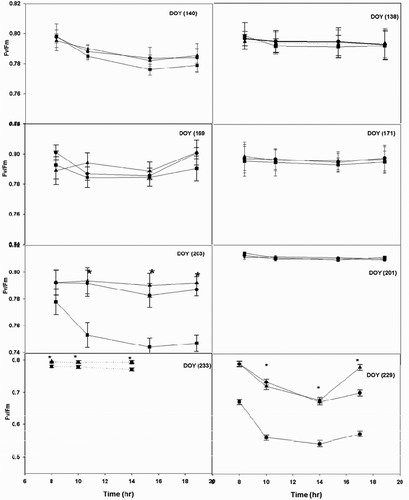Figures & data
Figure 1. Total rainfall (bars) and monthly mean air and maximum air temperature (lines) at the John C. Pair Horticultural Research site, during 2004, 2005, and 2006 growing seasons.
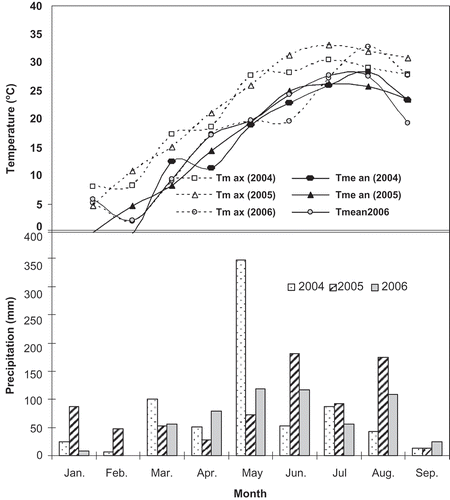
Figure 2. Seasonal pattern of mid-day leaf water potential of grapevine cultivars: Concord (square), Pinot noir (triangle), and Traminette (circle) in 2005 (A) and in 2006 (B) growing seasons. Bars not visible indicate standard error smaller than symbol. Asterisks denote significant difference among cultivars at p < 0.05. DOY: Day of the year.
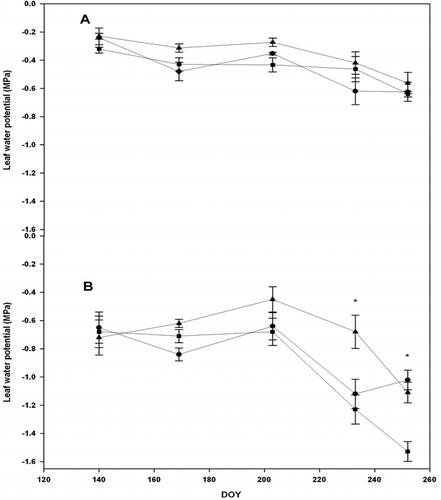
Figure 3. Diurnal course of leaf water potential measured at different times (DOY) in grapevine cultivars: Concord (square), Pinot noir (triangle), and Traminette (circle) in 2005 (right) and 2006 (left) growing seasons. Bars not visible indicate standard error smaller than symbol. Asterisks denote significant differences among cultivars at p < 0.05. DOY: Day of the year.
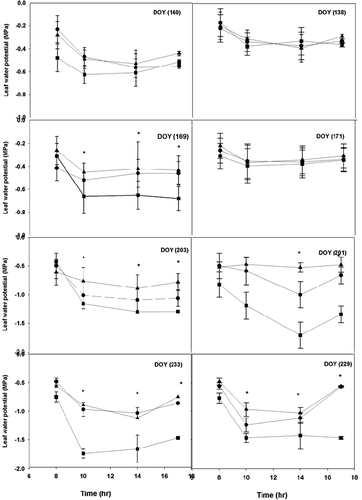
Figure 4. Seasonal course of photosynthesis, and conductance in grapevine cultivars: Concord (square), Pinot noir (triangle), and Traminette (circle) in Citation2004 (A), 2005 (B), and 2006 (C) growing seasons. Bars not visible indicate standard error smaller than symbol. DOY: Day of the year. Asterisks denote significant differences between treatments for each cultivar.
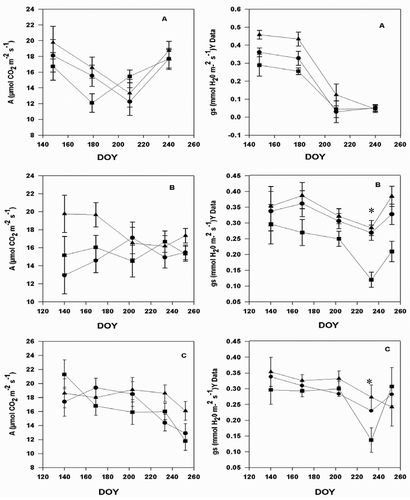
Figure 5. The relationship between intrinsic water use efficiency (WUEi) and stomatal conductance (gs) in 2004 (A), 2005 (B), and 2006 (C) growing seasons, n = 3.
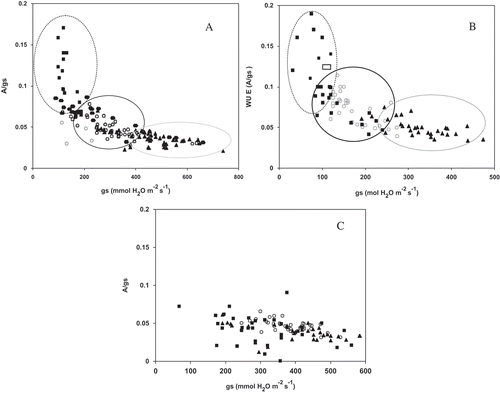
Figure 6. Diurnal course of quantum efficiency (Fv/Fm) measured at different times (DOY) in grapevine cultivars: Concord (square), Pinot noir (triangle), and Traminette (circle) in 2005 (A) and 2006 (B) growing season. Bars not visible indicate standard error smaller than symbol. Asterisks denote significant difference among cultivars at p < 0.05. DOY: Day of the year.
